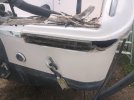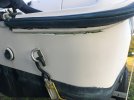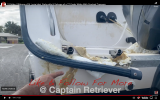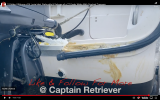About to be pulling the motors and removing the bang plate from the Islander. 1995 vintage…what do you expect to see under there? I do have a few millimeters of movement in the circled area on the pictures. A few questions…
There is the angle aluminum piece and a separate (fiberglass?) cover that “finishes” the forward facing part of the transom…will that piece pry off? And what it is called?
Does anyone have any pictures of their transom jobs or what they found with their bang plates removed? Thank you…I’m pretty nervous to see what I’m going to find.
There is the angle aluminum piece and a separate (fiberglass?) cover that “finishes” the forward facing part of the transom…will that piece pry off? And what it is called?
Does anyone have any pictures of their transom jobs or what they found with their bang plates removed? Thank you…I’m pretty nervous to see what I’m going to find.







